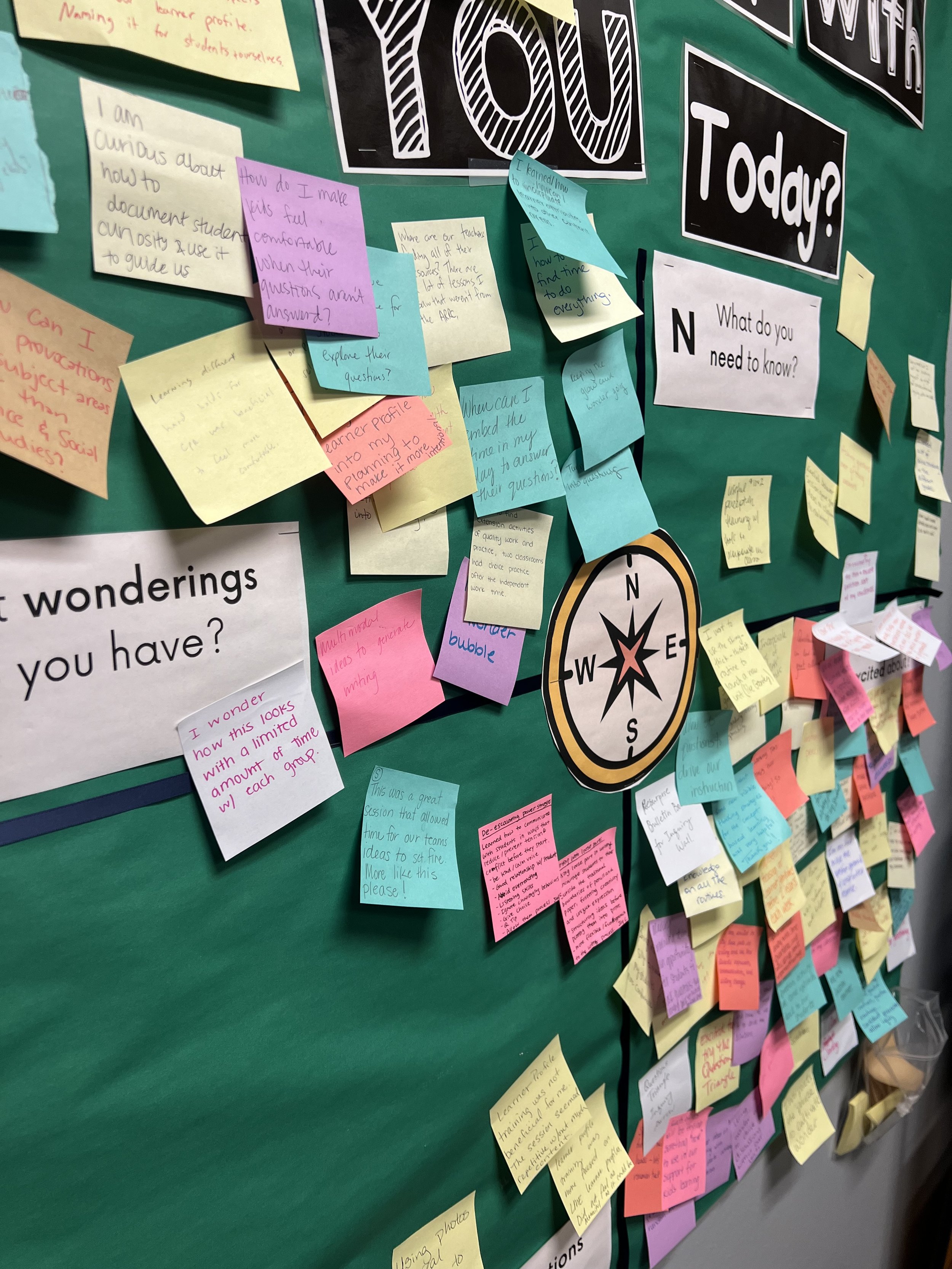Layering Thinking: One Way to Leverage Thinking Routines & Dig Deeper
Thinking routines.
A “go to”.
A “must have”.
An “essential” in any inquiry setting.
Time and time again, there’s a handful of thinking routines that I find myself returning to as I support those new to teaching and leading with an inquiry mindset, ones I circle back to to gather feedback from my learners at the end of a professional development session and routines that I lean into that gather essential reflections and tap into deeper thinking and provide a clearer picture into what connections and meaning are being made at the tail end of a provocation.
From Compass Points to Connect-Extend-Challenge to What? So What? Now What? and even the more familiar See-Think-Wonder I return to the simplicity of these routines because of the ripple effect they have on one’s inquiry practice.
Last week, I began an exciting partnership with a new school curious to take their inquiry practice to a deeper level. They outlined the learning and foundational groundwork they had already engaged in with one another, identified barriers and challenges that had emerged as they dove into big ideas and shared wonderings they hoped might be answered during our learning with one another this academic school year.
As we kicked off our first session together, I introduced a favorite thinking routine, Tug of War, to anchor and ground us in the space of learning with one another. This routine is a foundational routine in my practice and love to introduce it to those new to inquiry as a core move they consider in their first steps towards planning and learning with this mindset.
Knowing that time is always a barrier for educators, I thought it might be interesting to not only revisit the chart paper to help us reflect with one another on early ideas but to also use the Tug of War as a provocation it itself.
Layering the Thinking
As the group played off one another’s sharing, ping ponged connections and settled into a reflective conversation I asked each teacher and leader to consider the ideas and thinking that were being shared and pause to reflect once more. Next, I promoted them to ask our thinking a question.
Some heads buried down and began quickly jotting down wonderings while others gave side eyes and curious glances towards me a bit unsure what what they should be wondering about. I heard more whispers among colleagues sorting some thinking and pairs connecting with one another to jointly brainstorm a question with one another. As the hum of the room continued, I could feel the thinking happening in that space. I knew the wheels were turning for some and cognitive friction was stalling others. I finally pipped in with a few sentence stems such as “Our thinking is making me wonder about…?” and “I wonder how you…” to scaffold a few lingering minds and pulled up a chair to a small group that formed in the back of the space. The evidence of Tug of War had language for teachers to draw from and anchored and supported the connection making I was tasking the group to consider.
Although many of the questions didn’t surprise me, it was important to end the session rooted in the very thing that is at the core of inquiry: curiosity. With layered this layered thinking I had better sense of questions to circle back to during our session that morning, I could “see” what mattered most to the group, teachers (and leaders) were able to flex their skills in asking questions and (even more important) school administrators and campus leaders now had piles of questions they could revisit and connect to continued campus work in between our time with one another. What a rich collection of data!
After facilitating a different version of thinking routine that has been in more practice for well over a decade, I’m fascinated by this small shift and what it fostered in that space. I reminds me of how knowing “my curriculum” helped me be more confident with this familiar structure, it makes me rethink how many time we hold ourselves back and resist a playful approach to our practice and it reground me in values I hold close as an inquiry leader—connection, creativity and curiosity.
So now, I’m curious what thinking routines might you try a bit different next time around? How might you revisit thinking in a different way?
*Gratitude goes to educators and administrators at Tarvin Elementary for inviting me into their inquiry journey this year.



